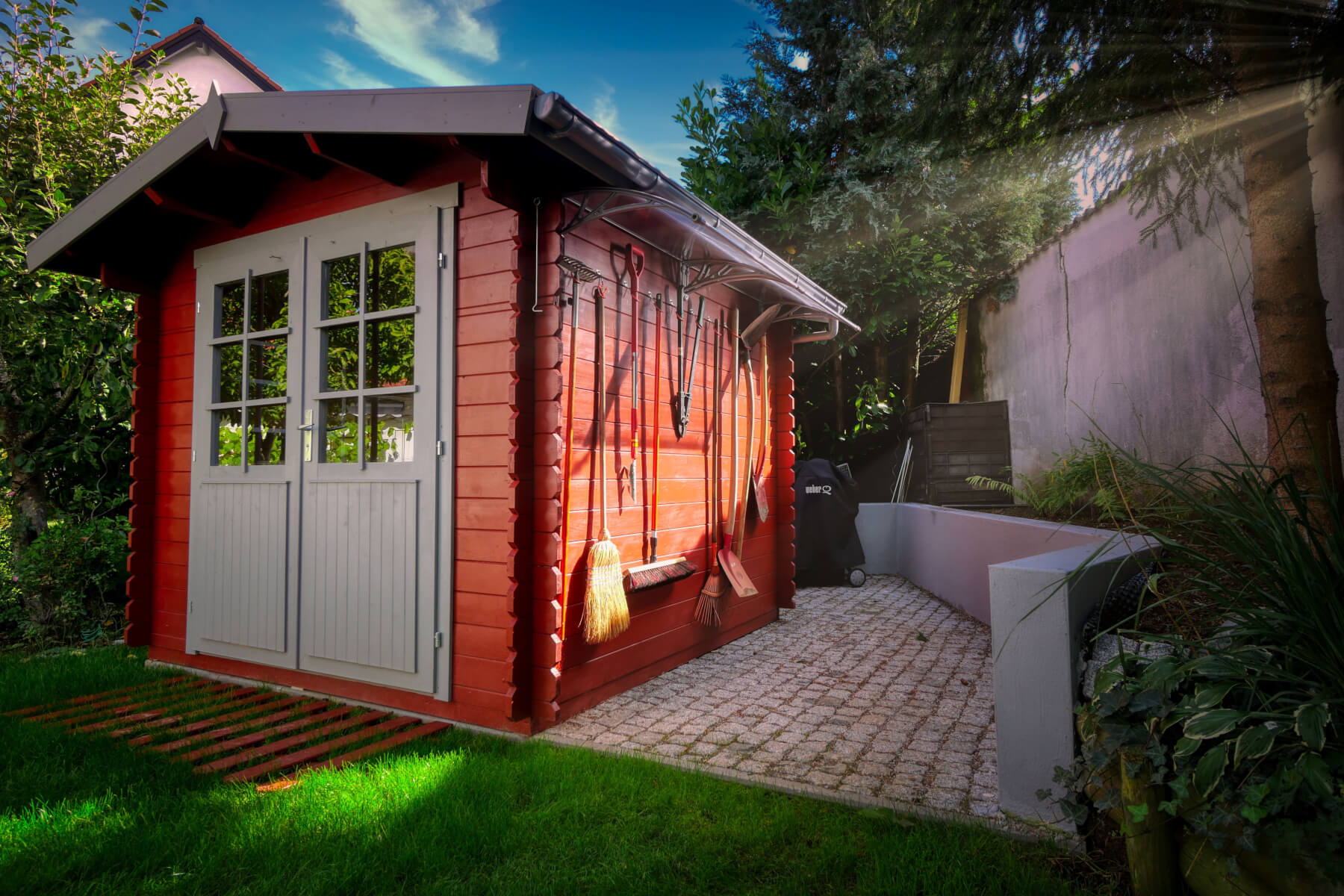The short answer to this is yes a paver foundation is an excellent alternative to concrete. It’s a much more economical option and there’s no need for a concrete mixer.
The importance of a shed base cannot be underestimated, as it will give the building stability and keep it off the ground, reducing the chances of any dampness creeping up the walls causing them to rot, in short, it is essential if you wish to give your shed longevity.
Where should I build my garden shed?
Firstly, find a spot where the soil is neither too soft or too rocky, as softer soil could cause paving slabs to shift and sink over time, while rocky soil will be difficult to clear.
Also take a look at your garden’s drainage channels before choosing where to place the shed. If you install a paver foundation at a low point in your garden, rainwater will have nowhere to go and this could cause problems.
Another consideration is sunlight. Direct sunlight can damage the exterior of the building hence a more shady position is advisable. One good place for a shed is close to the walls of your house where there’s usually plenty of shade.
How to build a shed with paving slabs
1. Check if you need planning permission.
It’s always advisable to do this before you buy the materials to build your shed as some garden structures do require the permission of your local council.
2. Prepare the site
One you’ve decided where you want your shed to be, you need to clear a space larger than the area it will cover so you have enough room to work.
3. Measure and mark the shed paver base
Next move is to mark out the area to be paved by knocking four stakes into the ground then marking out the area by stringing them together with rope.
4. Calculate how many slabs you need for the marked out base
To do this you’ll need to calculate the square footage of the base by multiplying the length and the width of the marked area then you need to divide that number by the size of each paver. Multiply the length and width of the stone and then divide your foundation’s square footage by that number.
Now you know how many pavers you need. It’s advisable to buy more pavers than you actually need just in case some get broken either in transit or when you’re laying them.
5. Time to dig
Within the parameters you’ve created, dig to a depth of about six inches, tamping down the soil as you go to make it firm, then lay landscaping fabric – this stops weeds from growing up through the stone.
6. Lay a gravel base
This is another layer that will ensure that there’s no movement and everything remains level.
7. Add a layer of sand and cement
Take one part dry cement and eight parts dry sand and mix thoroughly before laying it onto the gravel, creating a smooth layer. This needs to be compacted as much as possible to create a stable base.
8. Lay your paving slabs
Place your first paving slab on top of the mortar bed, ensuring it fits snugly in the corner with no gaps then use a mallet to gently tap the slab into place. If you’re using natural stone you need to be extra careful as you could crack the slab. You can now move onto replicating the same with the next slab, continuing to complete the first row with a 5mm-10mm gap between each. Keep checking with a spirit level as you go.
9. Edge the slabs
This needs to be as close to the pavers as possible to stop weeds from sprouting up at the edges of your base.
10. Fill the gaps
You do this by spreading a layer of the mortar mixture over the pavers and moving it around, pressing it between the slabs as you go. Once the gaps are filled you can brush away the excess After this you should lightly dampen the entire foundation surface. The water causes the sand and cement mixture to harden, creating a strong foundation. You can use a garden hose with a fine mist nozzle for ideal results. Leave for 24 hours before you fix your shed to the pavers.
At The Premium Paving Company, we have broad range natural stone paving suitable for every project and budget. View our shop to take a closer look at our paving products. If you wish to know more about the different ways paving can be used in your garden, get in touch with our specialist team.








